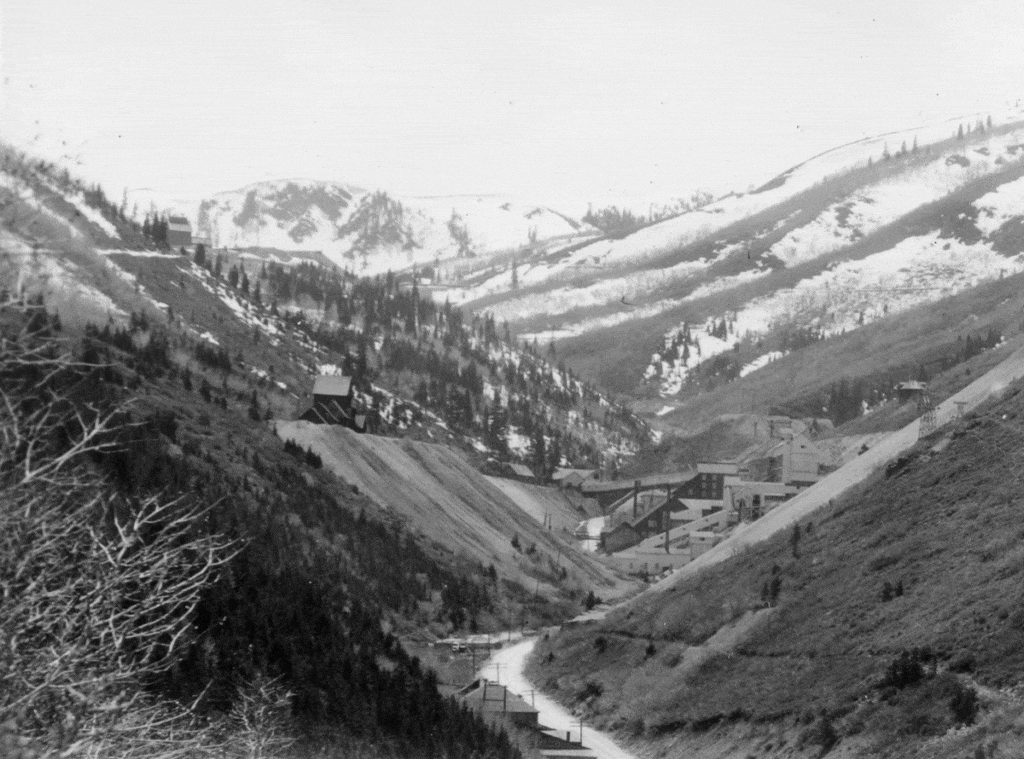This is the sixth article in a series on the Conkling Mining Co. v. Silver King Coalition Mines Co. lawsuit.
In November 1889, United States Deputy Surveyor Adolf Jessen spent his 39th birthday surveying the Conkling lode mining claim in Park City’s Uintah Mining District. An experienced mining engineer and surveyor, he had a civil engineering diploma from the School of Engineering at Mannheim, Germany. Mr. Jessen’s soundness of knowledge was respected by all of the mining men in Utah who knew him.
The Conkling survey was made on ground with a very steep slope, having a down grade of 40 percent or more. In map making and land surveying, an important fact to keep in mind is that it is the horizonal distance between two points and not the slope distance which is measured. Therefore, a lode claim with a horizontal distance of 1,500 feet located on a mountainside with a 40% grade (21.8 degrees), would have a slope distance greater than 1,600 feet. In other words, a right triangle with a 1,500 foot base and a rise of 600 feet would have a hypotenuse equal to 1,615.5 feet.
Mountain terrain does not have a uniform slope. The ground can be very uneven and irregular in nature. Surveyors work with elements of geometry, trigonometry, physics, engineering, and law to minimize these irregularities. Fighting November’s cold and snow on a steep rugged mountainside at an altitude of 8,000 feet, surveyor Jessen celebrated a nearly impossible task and a very un-happy birthday. The posts marking the Conkling claim corners fell 135.5 feet short of the 1,500-foot length given in the written legal description.

Credit: Park City Historical Society & Museum, Himes-Buck Digital Collection
The conflict between the survey and the worded patent would spark a 13-year legal battle that would ultimately be decided by the U. S. Supreme Court and involve millions of dollars-worth of high-grade silver ore. Adolph Jessen’s official written legal description of the Conkling’s boundaries would be much more accurate than the actual survey, but would it stand up in court?
Fifteen years later, on May 27, 1904, the Salt Lake Tribune reported that Adolph Jessen and his assistant Hugh Allred were surveying a placer mining claim on a steep hillside in Bingham, Utah. They were running a line at nearly right angles with a 5,000 volt power line of the Telluride power company. Jessen had carried one end of the surveyor’s chain, or metal tape, to a point a short distance below the power line. Allred, holding the other end of the tape, was standing on the hillside above the power line in such a position that when the chain was pulled taut it touched the wire carrying the powerful electric current. A circuit was formed, which sent the current through the bodies of both men instantly killing them.
Allred’s hands were badly burned, but not a mark was found on the body of Jessen until his shoes were removed. Small burns were found in the bottoms of his feet, which corresponded with the nails in his shoes. Where the steel tape line came into contact with the overhead wire was a mark the size of an ordinary nail.
This story will be continued (next we get back to the lawsuit). Don’t miss the next virtual Museum lecture Wednesday, June 2 from 5 p.m. to 6.p.m. This Spanish language lecture will correspond with our current traveling exhibit on Dolores Huerta and farm workers’ rights. Register here.